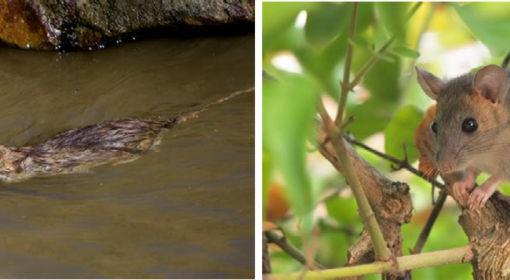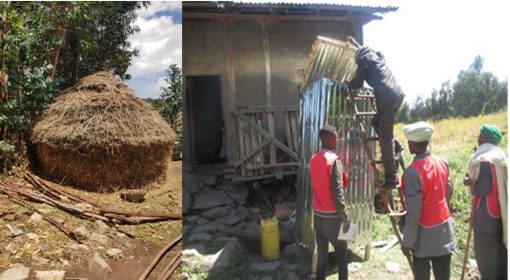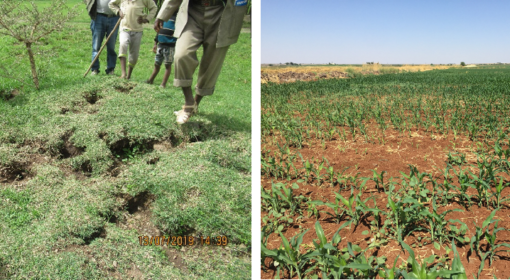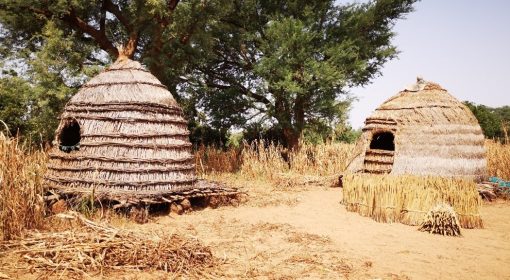by Farah Kamaleddine, Shadi El Indary, Zeina Mahmoud, Emiliano Moussa, Luwieke Bosma
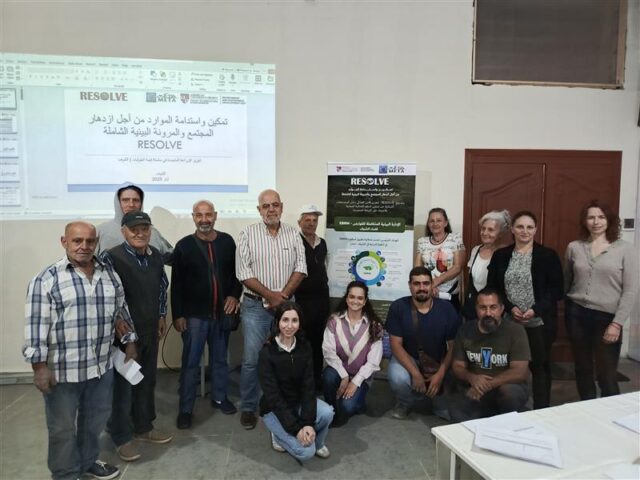 | 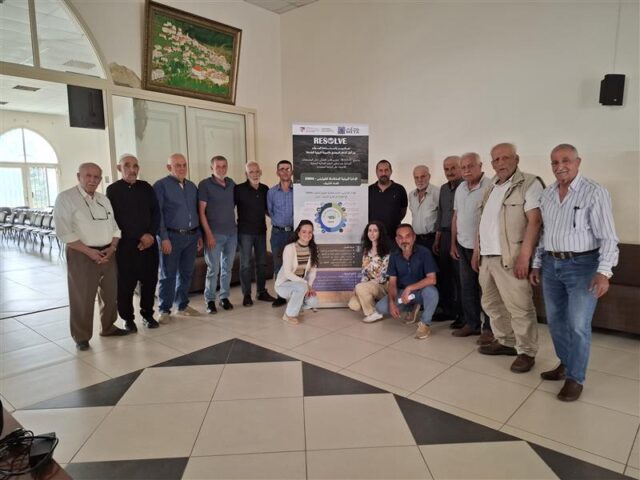 |
As Lebanon’s food system struggles to recover from years of economic and political unrest, farmers continue to face mounting challenges, one of which is managing pests, particularly rodents, in sustainable ways.
Rodent control in Lebanon still heavily depends on chemical solutions, particularly anticoagulant rodenticides (ARs), which are classified into two groups: first-generation (FGARs) and second-generation (SGARs) [1]. However, there is no available data on the exact quantity of ARs used in the country. The only relevant statistic indicates that Lebanon imports approximately 6,641 tons of pesticides annually, including rodenticides [2]. This high usage of synthetic pesticides has led to several alarming consequences:
- Residue issues: Lebanese exported vegetables and fruits are often rejected by importing countries due to high concentrations of pesticide residues [3].
- Health concerns: There is a potential link between pesticide exposure and increasing cancer rates in the population [4].
- Environmental impact: The widespread use of chemical pesticides threatens biodiversity and soil health [1].
Despite these threats, Lebanon lacks national policies regulating pesticide use. Moreover, rodent control is generally not carried out by trained specialists, making its application unsafe for both the user and surrounding environment.
To address these issues, MetaMeta Research is introducing Ecologically-Based Rodent Management (EBRM), a regenerative and sustainable approach that focuses on understanding rodent behavior and reducing their access to food, water, and shelter. EBRM is being piloted under the RESOLVE project, led by the Environmental Sustainability and Development Unit (ESDU) at the American University of Beirut (AUB). The project aims to strengthen food security in Lebanon through regenerative agricultural practices, with rodent management being one critical area of intervention.
The Lebanese farming sector’s overreliance on chemical rodenticides not only threatens biodiversity but also leaves farmers vulnerable to market and economic shocks. This vulnerability became especially apparent in recent years, when the economic crisis, compounded by the COVID-19 pandemic, caused sharp price increases and restricted access to imported agricultural inputs, including pesticides. As a result, farmers faced both higher costs and shortages of essential pest control products. In this context, building farmer resilience through ecological alternatives is no longer a luxury, but a necessity.
To better understand the scale of the rodent problem and the feasibility of EBRM, a household survey was conducted in 23 villages across the Shouf district. The findings indicate rodents pose problems to farmers, especially to legume growers:
- Rodents represent a huge problem for legume growers, mainly lima beans, beans and peas in villages that are known for these crops (Deir Dourit, Wadi Bnahleh, Bater…).
- Most farmers in the Shouf area adopt a mosaic of crops (polyculture), which sometimes favors rodent infestation (food availability throughout the year).
- Around 70% of farmers noticed an increase in rodent numbers in the last 10 years (especially in the last 2-3 years).
- >70% of farmers depend on chemical control measures for rodent control (poison)
- >90% of farmers are interested in participating in future rodent management trainings on EBRM.
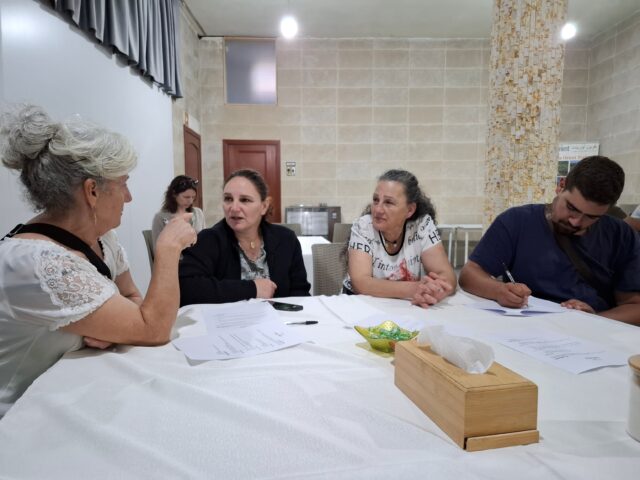
Building on this, two Focus Group Discussions (FGDs) were held in Wadi Bnahleh and Bater to collaboratively explore which EBRM strategies might work best within the legume farmers’ existing cropping systems.
These sessions were extremely insightful. Farmers shared their deep understanding of rodent behavior, field realities, and the practicalities of different EBRM techniques. Together, we analyzed the pros and cons of each method, and farmers helped shortlist the techniques most suitable for pilot testing in their fields.
Across all focus groups, the rodent problem was consistently ranked as having a “high impact” on their farming operations. The most frequently cited contributing factors included climate change, unregulated pesticide use, and rising input costs, all of which were perceived to significantly worsen pest pressures. Urban expansion was also flagged as a growing concern, especially for its role in exacerbating water pollution and facilitating the spread of rodents into agricultural areas. Figure 1 summarizes the farmers’ insights during FGDs conducter in Bater and Wadi Bnahleh (Shouf District, Lebanon).
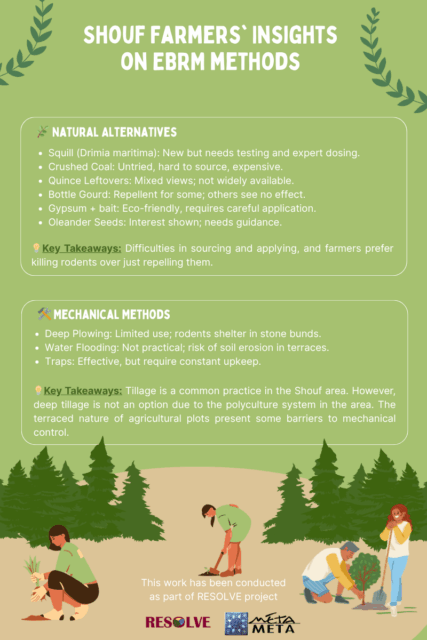 | 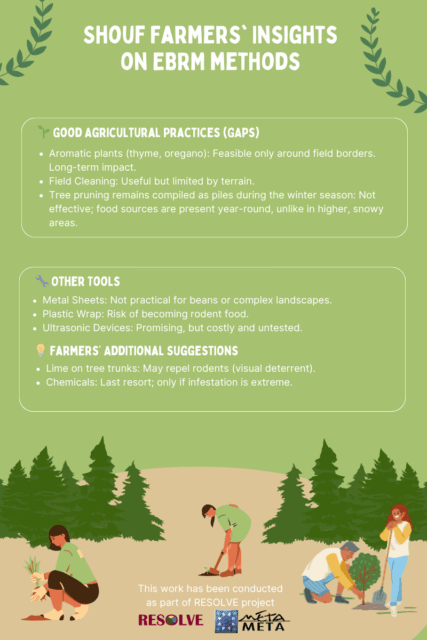 |
Barriers to action
In light of the challenges farmers face in sustaining production, implementing EBRM practices in Lebanon presents a promising strategy that can positively transform food systems in the region. However, as a new concept locally, it remains largely untested, leaving farmers uncertain about its effectiveness. Raising awareness and building farmer capacity is key. Rodent control also requires long-term commitment, yet high production costs push farmers toward cheap, quick fixes—often with harmful environmental impacts. Limited access to EBRM tools and the need for collective action further complicate adoption. Without coordinated efforts, unmanaged lands become hotspots for infestations, threatening nearby fields. These barriers hinder the shift toward sustainable rodent management.
EBRM is not a one-size-fits-all solution!
A practical, collaborative approach, where farmer knowledge and experience directly inform decision-making, is essential for effective ecological rodent management. Farmers are experts in their fields, and their observations during focus group discussions closely matched scientific findings, especially regarding rodent behavior and crop impacts. This confirms that working together and listening to farmers’ concerns, as well as weighing the pros and cons of each idea, is the best way to develop realistic and effective solutions.
EBRM is not a one-size-fits-all solution. It requires flexibility and adaptation to local conditions. That’s why, based on our discussions, we are now entering a testing phase. We have prepared EBRM kits for farmers, which include different sizes of snap traps, cage traps, and gypsum powder. For one larger farm, we will also test the Linear Trap Barrier System (LTBS). These interventions have been chosen together with farmers, based on their feedback and local needs.
Going forward, we will regularly monitor each site with trapping campaigns to assess which EBRM methods are most effective for legume growers in the Shouf. This practical, step-by-step process aims to help farmers reduce their reliance on chemical rodenticides and build a more resilient, sustainable farming system.
References:
- Rached, A., Abi Rizk, G., Mahamat, A. B., Khoury, G. E., El Hage, J., Harran, E., & Lattard, V. (2022). Investigation of anticoagulant rodenticide resistance induced by Vkorc1 mutations in rodents in Lebanon. Scientific Reports, 12(1), 22502. DOI: https://doi.org/10.1038/s41598-022-26638-5
- Abou Zeid, M. I., Jammoul, A. M., Melki, K. C., Jawdah, Y. A. & Awad, M. K. Suggested policy and legislation reforms to reduce deleterious effect of pesticides in Lebanon. Heliyon 6, e05524. https://doi.org/10.1016/j.heliyon.2020.e05524 (2020).
- FAO. (2019). Food and Agriculture Organization Country Report: Lebanon – Pesticide Use and Residue Levels.
- WHO/IARC. (2015). Evaluation of five organophosphate insecticides and herbicides; Lebanese Agricultural Research Institute (LARI). (2020). Monitoring of Pesticide Residues in Lebanese Produce.
